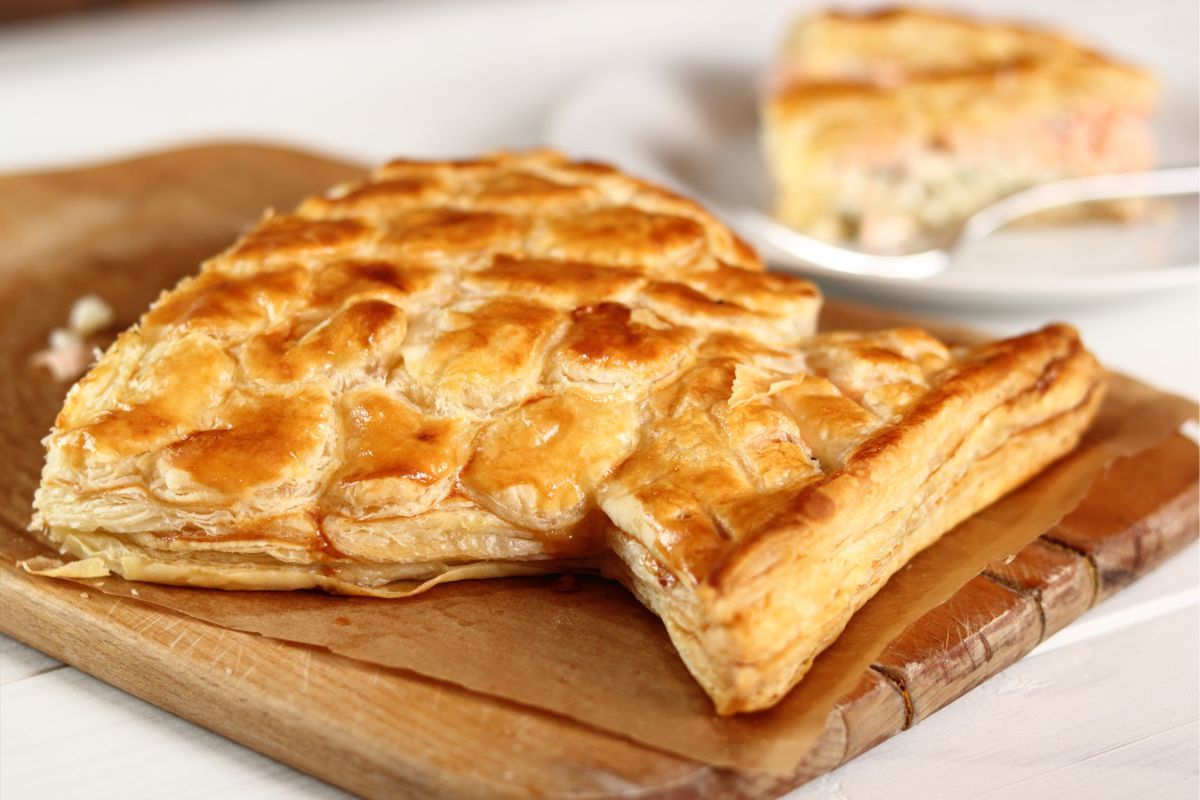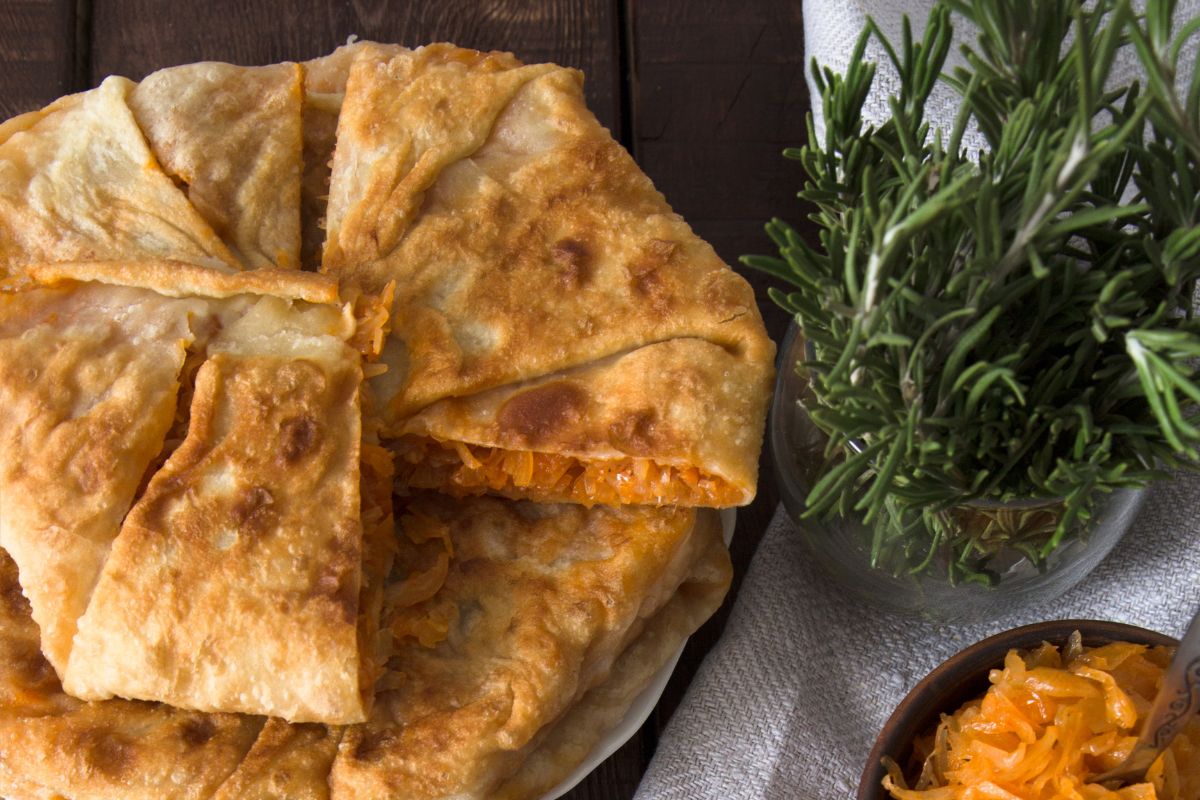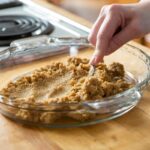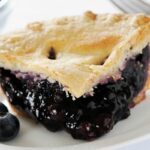When it comes to a pie crust, there are in fact various different pastries that you can use. When most people think of a pie crust, they will think of a shortcrust pastry.
Yet, depending on your type of pie, you can use puff pastry or cookie dough as the pie crust.

Puff pastry is often used for tarte tatin, but it also makes the ideal pie crust for fruit pies. It is an easy paste to use, and will provide you with a crisp and flaky pie crust.
In this article, we will go into further detail about whether you can or should be using puff pastry as a pie crust.
What Type Of Pastry Is Used For Pie Crusts?
Typically, when it comes to a pie crust, the pasty that is used is shortcrust pastry. For tart, pie or Quiché casings, shortcrust pastry’s more crumbly, biscuit-like texture is ideal.
It is also able to resist soaking up any of the pie or tarts filling, which happens for a lot of pastries.
Thus, shortcrust pastry is able to remain robust and sturdy even when filled with a wet filling. Even when it has been released from its tin, this type of pastry is able to keep its shape and won’t collapse.
As a result, shortcrust pastry is a reliable pastry to be used as a pie crust. Yet with that being said, there are a lot of other pastries that have similar characteristics which people like to use instead.
Using Puff Pastry For A Pie Crust
Generally, puff pastry is flaky, light, and buttery, and it works well for pies and pastries. Typically, vegetable or canola oil is used to make it. Puff pastry made using butter rather than vegetable oil and no sugar is known as butter puff pastry.
It is entirely up to you whether to use butter puff pastry or regular puff pastry.
What Is The Difference Between Puff Pastry And Pie Crust Dough?
Pie dough, otherwise known as shortcrust, is created utilizing a speedier and easier technique. To make a loose dough, cold fat or butter is stirred into ordinary flour by hand or using a mixer.

After that, a small quantity of cold water is used to bond it. It is then shaped and placed to form the top or bottom of a pie after being chilled.
While puff pastry is tasty, it requires more time to prepare and can be considered a labor of love because the dough must be manually rolled.
A large block of solid butter is wrapped in pastry dough to create puff pastry, which is a laminated dough.
The two are then rolled and folded together. This procedure is repeated several times.
Also, to keep the butter’s coldness, the dough must rest in the refrigerator. The butter acts as a separator between the numerous layers of dough formed by folding and rolling.
The water-containing butter will release steam, resulting in a flaky, light, and soft pastry.
The layers of puff pastry start to split and rise when they are baked. Even the butter’s bubbling as it bakes and puffs between the numerous layers is visible.
Due to puff pastry’s labor- and time-intensive requirements. It is frequently purchased rather than made from scratch. Store-bought puff pastry is available at most grocery stores.
Substituting Puff Pastry For Typical Pie Crust
As a rule, the delicate puff pastry won’t be able to support the filling within the pie. Thus, we wouldn’t advise you to use it in place of the pie crust for the bottom layer.
Due to the pastry’s flakiness, the bottom crust will crumble. The top of a pie crust can, however, be made using puff pastry, which will give it a crisp, flaky feel.
Hence, you can’t do away with the pie dough pastry altogether if you want pastry on the top or bottom of your pie.
Although, there are a lot of pies that only have pastry on the top and in this case you could just use puff pastry.
How Thick Should Puff Pastry Be For A Pie?
When using puff pastry for a pie crust, you want to roll the pastry to a depth of around 4 to 5 mm. You need to keep in mind that puff pastry will expand and rise a lot more than your typical pie pastry.
Thus, it can be rolled out slightly thinner, as all the layers will puff up while it is cooking and form a lot of height.
With that being said, you don’t want it to be too thin, otherwise the pastry won’t puff up enough. Yet, like with any dough or pastry you don’t want to roll it too thin.
As thick puff pastry isn’t very pleasant to eat. It’s all about finding the right balance compared to the amount of filling that you have.
Final Thoughts
Puff pastry is a delicious type of pastry which is often used for tarts. Yet it can be used when you are creating pies too.
Usually, a pie will be made using a pie crust that is created using shortcrust pastry, but you can use puff pastry in its place.
Although, there are some things to keep in mind. For example, puff pastry shouldn’t be used on the bottom of your pie.
As it will soak up all the liquids of the filling. Then when you slice into the pie it will break, as it doesn’t have a strong enough structure.
Puff pastry is best used as a top crust when used for pies. This way you can enjoy the buttery, crisp flaky pastry as it was meant to be enjoyed.
We hope this article has helped answer your question on whether puff pastry can be used for pie crust.
- How To Reheat A Cheesesteak - November 5, 2023
- What Are Three Must Have Kitchen Knives? - September 22, 2023
- How To Protect Edges Of Pie Crust - June 15, 2023








